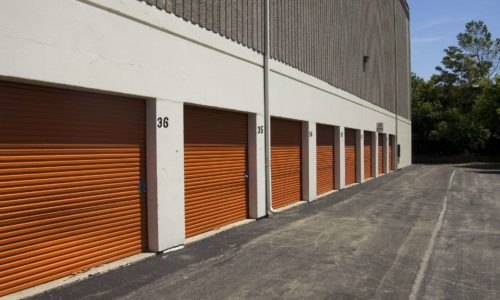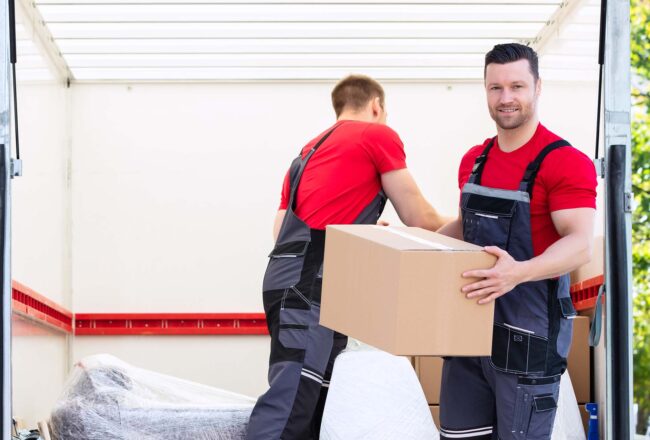Embarking on a long-distance relocation can be a complex task, filled with unique challenges and exciting opportunities. Our comprehensive guide on organizing a successful long-distance move is designed to navigate you through this intricate journey. With expert tips and insightful strategies, we’ll show you how to transform this daunting process into a successful relocation.
The First Thing in Any Cross-Country Moving Guide – Setting a Timeline for the Interstate Moving
Creating a detailed timeline is vital for a successful interstate relocation. It helps manage tasks on your to-do list systematically, reducing stress and last-minute chaos. Start by identifying your relocation date, then work backward to schedule crucial activities like hiring movers, packing, and finalizing your new home arrangements.
Consider seasonal weather changes and their potential impact on your relocation. For instance, winter weather can cause delays. Also, align your packing schedule with work and personal commitments to avoid conflicts. Factor in time for essential tasks in your new location, such as setting up utilities or enrolling children in school. A well-structured timeline ensures a smoother relocation process.
Budget Planning When Moving State-To-State
Effective relocation budget management is key for a state-to-state move. Begin by obtaining quotes from several relocation companies and comparing their services and costs. Be aware of hidden expenses, like special handling fees or unexpected storage costs.
Consider packing items yourself to save money, but weigh this against the time and effort required. If possible, move during off-peak seasons for potentially lower rates. Proper budget planning, including preparing for hidden costs, makes your long-distance relocation more financially manageable.

Long-Haul Moving Advice on Choosing the Right Moving Company
Selecting a legitimate relocation company is a crucial step in preparing for a relocation to a new state. Start by identifying your specific needs, such as the size of your shipment, special item handling, and storage requirements. Look for companies with experience in long-distance relocations, such as State2State Movers. Research their reputation through customer reviews and testimonials.
Avoid companies with a history of unresolved complaints or negative feedback. Reliable state-to-state movers should have a solid track record of successful long-distance moves. Ensure they offer comprehensive services that match your needs. Ask for detailed quotes to compare pricing and services. Don’t hesitate to inquire about their handling procedures for fragile items or any specific concerns you might have.
Verify that the company holds necessary licenses for interstate moving. Check their USDOT number for legitimacy and safety records. You can do this on the Federal Motor Carrier Safety Administration website. Lastly, having insurance coverage is vital for protecting your belongings during transit.
Understanding Moving Estimates Is Vital for a Successful Cross-Country Move
Understanding estimates from companies is crucial for a successful cross-country relocation. Familiarize yourself with the difference between non-binding and binding estimates. A non-binding estimate is an approximate cost based on the mover’s assessment of your belongings. As the name suggests, this option can change based on a variety of factors and circumstances.
In contrast, a binding estimate guarantees a fixed cost for the specific services in the agreement. Carefully review the contract for any hidden fees or clauses. Ensure it outlines services, charges, and delivery timelines clearly. A well-understood and transparent estimate can prevent unexpected costs and disputes that would cause you relocation stress.

Interstate Relocation Tips for Packing and Organizing
When preparing for an interstate relocation, efficient packing and organizing are crucial. Begin by gathering quality packing materials like sturdy boxes, packing tape, bubble wrap, and labeling markers. Start packing non-essential items early and systematically proceed to daily-use items as the relocation day approaches.
Downsizing and Decluttering Before Moving Interstate
Decluttering before a relocation to a new city can significantly ease the process. It reduces the volume of items to pack and ship, consequently lowering the costs of relocation services. Begin by sorting items into categories: keep, sell, donate, and dispose.
Consider hosting a garage sale or selling items online for extra funds. Donating unwanted items or giving them away to friends and family can also be fulfilling. Properly dispose of items that are neither useful nor in a condition to be donated. This downsizing effort makes for a lighter, more organized relocation.
How to Pack Efficiently? Stress-Free Moving Strategies You Should Know
For a stress-free relocation, adopt secure packing techniques. Protect fragile items with bubble wrap and ensure they are snugly packed in boxes without much room to move. Heavier items should go in smaller boxes to avoid overpacking. Label boxes with “Fragile” or This Side Up” as needed.
Another effective strategy is to create a relocation inventory list of your belongings. This list aids in tracking your items during shipping and is invaluable for insurance purposes. Label each box with a number and note its contents on your inventory.

How to Navigate the Relocation Day?
Navigating the relocation day requires preparation and calmness. Start the day early and review your checklist to ensure everything is packed. Keep important documents and valuables with you. Before the movers arrive, take photographs of your items for insurance purposes.
Ensure clear access for movers to load items efficiently. It’s helpful to have a plan for pets or small children to keep them safe and comfortable. Stay available to answer any questions the movers might have and do a final walkthrough of the house to ensure nothing is left behind.
Final Preparations You Shouldn’t Forget
Confirm the relocation company’s arrival time and your travel arrangements. Pack a relocation essentials box with items you’ll need immediately at your new home, like toiletries, medications, chargers, and a change of clothes. Ensure this essentials box is clearly labeled and set aside. Check all rooms, closets, and storage areas to ensure nothing is overlooked. Finally, get a good night’s rest.
Working With Your Movers and Coordinating Effectively
Effective coordination with your relocation crew is crucial for a smooth transition. Introduce yourself and walk them through your home, highlighting items that need special care. Discuss the plan and any specific instructions you may have.
Stay available to answer questions and provide guidance as needed. Be prepared for the paperwork and final checks when loading is complete. Understanding the mover’s process and maintaining clear communication will help the day go as smoothly as possible.

Settling Into Your New Home After a Successful Long-Distance Move
Unpacking after relocation and settling into your new home is an exciting phase that awaits you after all the anxiety about relocating. Begin by arranging the furniture and large items in their designated places. Unpack essentials first, like bedding, kitchen items, and toiletries.
Take your time to personalize your space, making it feel like home. Remember, settling in is not just about unpacking boxes – it’s about creating a comfortable, familiar environment for you and your family to enjoy in the years to come.
Time for Unpacking and Organizing the New Space
Efficient unpacking and organizing in your new space require a strategic approach. Once you unpack essential items, start with the rooms. The kitchen and bedrooms should go first, as these are essential for daily living. Unpack and set up your bathroom next.
Labeling boxes during packing will simplify this process – this is the moment you’ll be glad you labeled all those boxes! Gradually proceed to other areas like the living room and study. Prioritize setting up electronic devices and utilities. Remember, organizing your new home is a lengthy process, so take it step by step.
Tips for Adapting to a New City After Moving
Adapting to a new city involves exploring and engaging with your new community. Start by familiarizing yourself with the local area, including shops, parks, and public transportation. Join community groups or clubs to meet new people and make connections. Utilize local resources like libraries and community centers to find information about services and amenities. Embrace local events and activities to feel more connected and at home in your new surroundings.

Handling Post-Move Tasks Is Easier With a Post-Relocation Checklist
Handling post-relocation tasks efficiently is crucial for a smooth transition into your new home. Creating a post-relocation checklist can guide you through this process, ensuring you don’t overlook any important steps. This checklist helps you stay organized and reduces the stress often associated with settling into a new place. Let’s take a look at what needs to be done:
- Address changes – Update your address with the post office, banks, insurance companies, and other important institutions.
- Utility setups – Ensure all utilities are transferred or set up, including water, electricity, gas, internet, and cable.
- Home inspection – Check for any damages or issues that need attention in your new home.
- Local registrations – Register for local services such as waste collection, and update your driver’s license and vehicle registration if necessary.
- Community engagement – Explore your neighborhood, meet neighbors, and locate essential services like grocery stores, pharmacies, and healthcare providers.
- Evaluating the relocation – Reflect on your relocation experience and provide feedback or a review for your relocation company. This can help them improve their services and assist future customers.
Contact State2State Movers for Expert Long-Distance Moving Services
Looking for reliable and expert long-distance moving services? State2State Movers is your ideal choice. With our extensive experience in handling interstate relocations, we ensure a smooth and stress-free experience. Our team of professionals is equipped to manage all aspects of your relocation, from providing packing assistance to efficient transportation.
We understand the challenges of long-distance moves and are committed to providing top-notch services tailored to your specific needs. Don’t let the stress of relocating overwhelm you. Contact us today and book our moving services for a seamless and successful relocation. Your peace of mind is our top priority!
How Far in Advance Should I Start Planning My Long-Distance Move?
Start planning your long-distance relocation at least 8-12 weeks in advance. This gives you ample time to research relocation companies, declutter, pack, and arrange logistics. Early planning can help you avoid last-minute stress and may provide more options for moving dates, potentially at better rates.
What Are Some Effective Ways to Reduce the Costs of a Long-Distance Move?
To reduce costs, declutter to lessen the load, compare multiple moving company quotes, and choose a non-peak time for your move. Consider packing items yourself and using recycled packing materials. Additionally, while driving your car to the new location might seem cheaper, professional vehicle shipping is actually more cost-effective. After all, you won’t have to spend any time on the road and make multiple stops along the way.
How Do I Choose the Best Moving Company for a Long-Distance Relocation?
Choose a moving company with good reviews, a proven track record in long-distance moves, and appropriate licenses and insurance. Ask for detailed quotes and compare services. Ensure they offer a binding estimate to avoid unexpected costs. Check their dispute resolution policy and customer service responsiveness.
What Are Some Essential Items I Should Keep With Me During the Move?
Keep important documents, valuables, medications, a change of clothes, basic toiletries, chargers, essential tools, snacks, and water with you. Also, include items for immediate needs upon arrival, like a first-aid kit, basic kitchenware, and bedding. This ensures comfort and accessibility during the transition.
How Can I Ensure My Belongings Are Safe During a Long-Distance Move?
To ensure safety, choose a reputable moving company with good insurance coverage. Take an inventory of all items and consider additional insurance for valuable possessions. Use quality packing materials and secure packing techniques. Stay in communication with the movers and track the moving process, if possible.
















